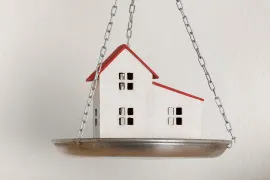Retirement income
Eleanor is still working generating RRSP room. She has $7,363 of room. If she adds $7,363 to her $76,000 account in the last year of her employment and the combined $303,363 continues to grow at three per cent after inflation, they would have enough to withdraw $20,560 per year for 19 years, until Eleanor turns 75.Up to age 65, the couple would thus have pension income of $50,676 for Jerry and $64,682 for Eleanor, Jerry’s $10,297 bridge to 65, and RRSP income of $20,560. That’s a total of $146,215. Even with splits they would be close to tripping the OAS clawback, which today starts $79,845 per person, but the approximately $6,000 of breathing room would probably protect them. After splits of eligible income and average 20 per cent tax with Alberta rates, they would have $9,750 to spend per month. That far exceeds present spending of $3,500 per month.
Once both are 65, Jerry would lose his $10,297 bridge. Their incomes would be $50,676 pension for Jerry and $64,682 for Eleanor, two CPP pensions of $11,556 each, two OAS pensions of $7,500 each and RRSP income of $20,560. That’s a total of $174,032. Split and taxed at an average rate of 20 per cent, they would have $11,600 to spend per month.
We have not included money from selling Eleanor’s $10,000 of company shares for we do not know their future price. Likewise, we have not included proceeds of $153,000 of present TFSA assets they may use along with potentially appreciated company shares to make up $100,000 wedding gifts for each child. Clearly, the couple has more than enough money for a new house and the wedding gifts.
There are risks in this plan. They might not realize $650,000 for their Yukon home and might spend more for a Calgary home. They might want to indulge their taste for travel which they currently budget at zero. Most of all, their retirement outlook from their mid-50s to 85 or 90 is long. A lot could change.
Inflation
Their largest risk is the way they have invested their retirement savings. Their employment pensions are fully indexed, but the $713,000 they hold in their RRSP, TFSA and non-registered savings is all cash. They have eliminated market risk in their planning but they have accepted guaranteed loss to inflation for their savings. As the purchasing power of their savings falls, they will be ever more dependent on their defined-benefit pensions. If they invest in diversified assets, they can maintain their way of life. It is the only long-run solution to pacing inflation.Retirement stars: 4 **** out of 5
Financial Post
( C) 2021 The Financial Post, Used by Permission


































